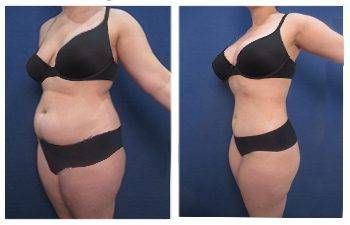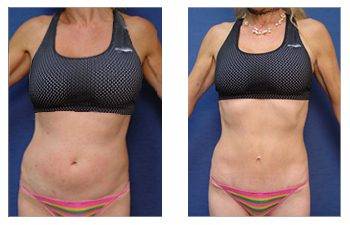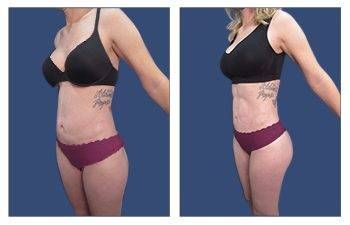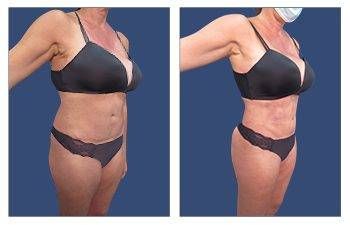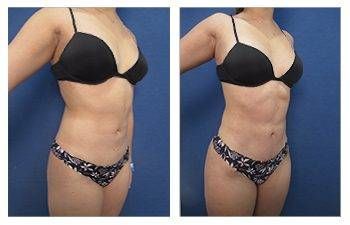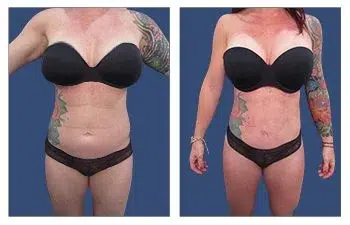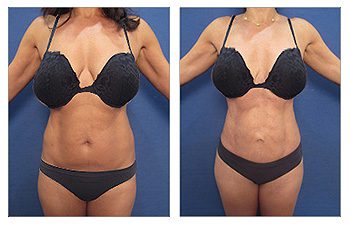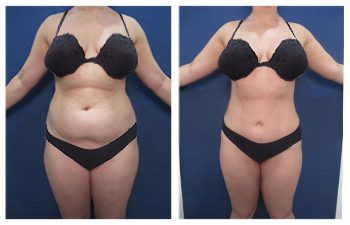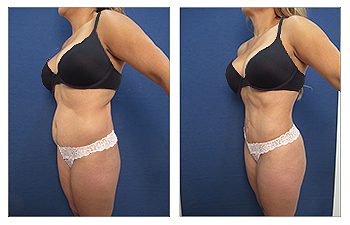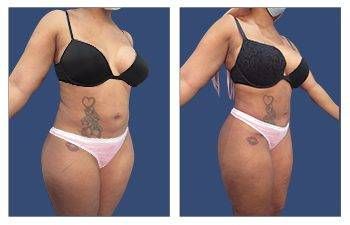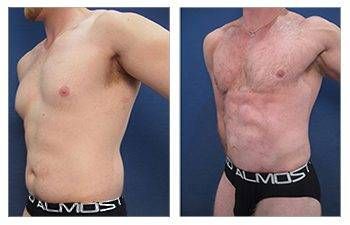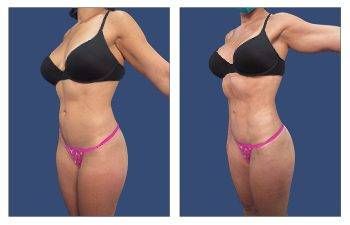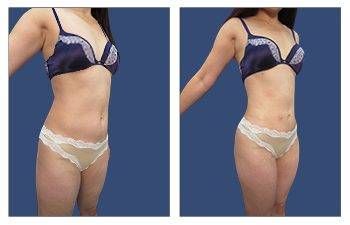Introduction: How to get rid of Upper Belly Fat
Upper belly fat, also known as visceral fat, poses significant health challenges and is associated with an increased risk of heart disease, type 2 diabetes, and other metabolic disorders. This type of fat accumulates around vital organs in the abdomen, making it more dangerous than subcutaneous fat found just beneath the skin.
Factors contributing to the accumulation of upper belly fat include genetics, hormones, diet, and lifestyle choices. Genetic predisposition can play a role in where fat is stored in the body, while hormonal imbalances, such as elevated cortisol levels due to chronic stress, can lead to increased visceral fat storage. A diet high in processed foods, sugar, and saturated fats can also contribute to upper belly fat, as well as a sedentary lifestyle and lack of exercise.
To effectively reduce upper belly fat and overall body fat, it is important to follow a healthy diet rich in fruits, vegetables, lean proteins, and healthy fats. Engaging in regular aerobic exercises, such as brisk walking, swimming, or cycling, can help burn calories and reduce visceral fat. Additionally, incorporating resistance training can help increase muscle mass and boost metabolism, aiding in fat loss. By addressing these factors, individuals can effectively reduce the risks associated with upper belly fat and improve their overall health.
What are the components of Upper Belly Fat?
Upper belly fat, also known as visceral fat, is a common concern for many people. This type of fat is not only unsightly, but it can also increase the risk of various health issues such as heart disease, diabetes, and certain types of cancer. In order to effectively address this issue, it is important to understand the components of upper belly fat and how it can be managed through a combination of diet, exercise, and lifestyle changes.
Visceral Fat
Visceral fat, also known as abdominal fat, is stored around the abdominal cavity and is associated with numerous health risks. These risks include an increased likelihood of developing type 2 diabetes, heart disease, and certain types of cancer. It can also contribute to insulin resistance and inflammation in the body. Monitoring waist circumference is important because it can give an indication of how much visceral fat a person has. A larger waist circumference is associated with a higher amount of visceral fat, making it an important measure for assessing health risks.
Subcutaneous fat, on the other hand, is stored under the skin and is less harmful than visceral fat. As people age, they are more likely to experience an increase in visceral fat due to changes in hormone levels, decreased activity, and changes in metabolism. This is why it becomes especially important to monitor visceral fat and take steps to reduce it as we get older. Maintaining a healthy lifestyle, including regular exercise and a balanced diet, can help to counteract the natural increase in visceral fat associated with aging.
Superficial Fat
Superficial fat, also known as subcutaneous fat, is the layer of fat located just beneath the skin. It is distributed across different areas of the body, including the abdomen, thighs, buttocks, and upper arms. As part of the body’s composition, superficial fat serves several important functions.
One of its key roles is insulation, helping to regulate body temperature by providing a layer of warmth and protection. It also acts as a cushion, protecting the body’s organs and tissues from injury. Additionally, superficial fat serves as a significant energy storage site, providing a reserve of fuel for the body to utilize when needed.
However, the levels of superficial fat in the body can impact overall health and physical appearance. Excess superficial fat, particularly around the abdomen, can increase the risk of various health problems, such as heart disease, diabetes, and high blood pressure. On the other hand, too little superficial fat can lead to decreased insulation and protection for the body.
In conclusion, superficial fat plays a vital role in the body’s composition, providing insulation, protection, and energy storage. However, maintaining a balanced level of superficial fat is crucial for overall health and physical appearance.
Loose abdominal Muscles
To tighten loose abdominal muscles, it is essential to incorporate regular core-strengthening exercises into your routine. Exercises such as planks, crunches, and leg raises can help to target and strengthen the abdominal muscles. Additionally, maintaining a healthy diet that promotes fat loss is crucial. Consuming nutrient-dense foods and controlling portion sizes can aid in reducing overall body fat, including around the midsection.
Incorporating a mix of cardio and strength training into your workout routine can also help to reduce overall body fat, which in turn can help reveal a more toned midsection. Cardio exercises such as running, cycling, or swimming can help to burn calories and decrease body fat, while strength training exercises can help to build muscle and boost metabolism.
Consistency is key when it comes to achieving tight abdominal muscles. Results may take time to show, so it’s important to stay patient and committed to your exercise and diet regimen. By consistently incorporating core-strengthening exercises, maintaining a healthy diet, and staying active with a mix of cardio and strength training, you can work towards tightening your abdominal muscles and achieving a toned midsection.
How to Reduce Upper Belly Fat with non-surgical means
If you’re looking to reduce upper belly fat without surgery, several non-invasive methods can help you achieve your goals. By making simple changes to your diet, incorporating regular exercise, and implementing some lifestyle modifications, you can effectively target and reduce the stubborn fat in your upper abdomen. It’s important to combine these strategies to see the best results and create a sustainable, healthy lifestyle. By following these non-surgical means, you can reduce upper belly fat and improve your overall health and well-being.
Eat A Healthy Diet
A healthy diet plays a crucial role in achieving weight loss and maintaining a healthy body composition. Eating natural, whole foods such as fruits, vegetables, lean proteins, and whole grains provides essential nutrients while avoiding processed foods high in sugar and salt can help in controlling calorie intake and reducing unhealthy fat accumulation.
Understanding the concept of the Glycaemic Index is important as it measures the impact of carbohydrates on blood sugar levels. Foods with a low Glycaemic Index like quinoa, sweet potatoes, and legumes can help in weight management as they are digested slowly and help in managing hunger, while high Glycaemic Index foods like white bread, sugary cereals, and processed snacks can lead to fat accumulation and weight gain.
In addition to food choices, staying hydrated by drinking water and consuming healthy beverages is important for weight loss and overall health. Managing portion sizes and meal frequency can also contribute to weight management by preventing overeating and keeping metabolism active. By focusing on a healthy diet, individuals can achieve weight loss, maintain a healthy body composition, and promote overall wellness.
Optimize Exercise
Get Plenty of Sleep
Getting at least 7 hours of sleep every night is crucial for maintaining a healthy weight and reducing abdominal fat accumulation. Numerous studies have shown a direct link between sleep deprivation and weight gain. When we don’t get enough sleep, our body’s regulation of appetite hormones becomes disrupted, leading to an increase in cravings for high-calorie, high-carb foods. This can result in weight gain, particularly in the abdominal area.
In addition to quantity, the quality of sleep is also important for weight management. Sleep disorders such as sleep apnea can disrupt the quality of sleep and have been linked to visceral fat accumulation. Visceral fat, which surrounds the organs in the abdominal cavity, is associated with a higher risk of developing chronic diseases such as heart disease, diabetes, and certain cancers.
Therefore, ensuring sufficient and good-quality sleep is essential for maintaining a healthy weight and reducing abdominal fat. It’s important to prioritize sleep as part of a healthy lifestyle, alongside balanced nutrition and regular exercise. Making sleep a priority can significantly contribute to overall well-being and weight management.
The Toll Of Old Age
As we age, our metabolic rate tends to decrease, leading to a redistribution of fat in our bodies. Older adults often experience an increase in visceral fat, particularly in the upper belly area. This accumulation of fat contributes to the appearance of a bulging upper belly.
The challenges of aging, such as decreased physical activity and hormonal changes, can exacerbate the accumulation of visceral fat. This type of fat is concerning as it surrounds vital organs and has been linked to an increased risk of chronic diseases, including heart disease, type 2 diabetes, and certain cancers.
To reduce visceral fat and trim the bulging upper belly, there are simple lifestyle changes that can be made. Engaging in regular physical activity, such as brisk walking or strength training, can help increase metabolic rate and reduce visceral fat. A diet rich in fiber and protein, and low in added sugars and refined carbohydrates, can also aid in fat loss. Consuming enough sleep, managing stress levels, and staying hydrated are other ways to reduce visceral fat and improve overall health in old age.
In conclusion, the changes in metabolic rate and fat distribution in old age can lead to a bulging upper belly, which poses health risks. However, by making small lifestyle changes, it is possible to reduce visceral fat and improve overall health as we age.
Drink Water
Drinking water is essential for overall health and well-being. Staying hydrated is crucial for weight loss, improved digestion, and toxin elimination. Water aids in digestion by helping the body break down food and absorb nutrients more effectively. It also plays a key role in flushing out toxins and waste products from the body, promoting a healthier and more efficient detoxification process.
Furthermore, staying well-hydrated can help prevent lifestyle diseases such as diabetes, heart disease, and certain types of cancer. Dehydration can also impact the body’s ability to burn calories, potentially leading to weight gain and hindered weight loss efforts.
To incorporate more water into your daily routine, try carrying a reusable water bottle with you and setting reminders to drink throughout the day. The recommended daily intake for optimal hydration is about 8-10 8-ounce glasses of water per day, although individual needs may vary based on factors such as age, sex, and activity level.
Making a conscious effort to drink more water can have significant benefits for your health and well-being, so be sure to prioritize hydration as part of your daily routine.
How to reduce Upper Belly Fat with Liposuction
Liposuction is a surgical option for reducing upper belly fat, but it’s important to note that spot reduction is not possible. While liposuction can remove excess fat cells from specific areas, overall lifestyle changes including a healthy diet and regular exercise are necessary for long-term success.
The potential benefits of liposuction for reducing upper belly fat include a more contoured appearance and increased self-confidence. However, there are also potential risks, such as infection, scarring, and irregularities in skin texture.
It’s crucial to consult with a certified expert to determine if liposuction is the right choice for your situation. They can provide personalized advice based on your overall health, body composition, and goals. Additionally, they can outline the specific risks and benefits of the procedure.
Ultimately, while liposuction can be effective in reducing upper belly fat, it should be seen as part of a comprehensive approach to health and wellness. Healthy lifestyle choices remain essential for achieving and maintaining desirable body composition and overall well-being.
How to reduce Upper Belly Fat with Reverse Tummy Tuck
A reverse tummy tuck is a surgical procedure designed to reduce upper belly fat and is an effective solution for individuals struggling to lose fat in this area. The process involves removing excess skin and fat from the upper abdomen, and tightening the remaining skin and muscles to create a smoother, flatter appearance.
The benefits of undergoing a reverse tummy tuck include achieving a more contoured upper abdomen, addressing loose, sagging skin, and reducing stubborn fat deposits that may not respond to diet and exercise. This procedure can greatly improve the overall appearance and confidence of the patient.
However, as with any surgical procedure, there are potential risks involved, such as infection, scarring, and adverse reactions to anesthesia. The recovery process typically involves resting and refraining from strenuous activities for several weeks, as well as wearing compression garments to support the healing process and minimize swelling.
Overall, a reverse tummy tuck can be a beneficial option for individuals seeking to reduce upper belly fat and achieve a more toned, flat stomach. As with any medical procedure, it’s crucial to consult with a qualified surgeon to discuss individual needs, risks, and recovery expectations.
How to reduce Upper Belly Fat with Full Tummy Tuck with muscle Repair
One effective way to reduce upper belly fat is through a full tummy tuck with muscle repair, which can target and remove excess fat and tighten the underlying muscles. This procedure can be complemented by a holistic approach that includes regular exercise, a healthy diet, and lifestyle changes. The tummy tuck surgery can specifically address the upper belly area by removing excess skin and fat, as well as tightening the abdominal muscles to create a flatter and more toned appearance.
During the procedure, the surgeon will make an incision along the lower abdomen, remove excess fat and skin, and then perform muscle repair to tighten the abdominal muscles. This will help to eliminate upper belly fat and achieve a smoother and more defined contour. In addition to the surgical procedure, incorporating regular exercise, maintaining a healthy diet, and making lifestyle changes can further support the reduction of upper belly fat and aid in maintaining the results of the tummy tuck surgery.
It is important to note that while a tummy tuck with muscle repair can effectively target upper belly fat, it should be seen as part of a comprehensive approach to overall health and wellness, including regular physical activity and a balanced diet.
Conclusion: How to get rid of Upper Belly Fat
To effectively reduce upper belly fat and promote overall fat loss, a combination of cardio and strength training exercises is key. Incorporating high-intensity interval training (HIIT), such as sprints or cycling, can help burn calories and reduce body fat. Strength training, particularly exercises that engage the core and upper body, such as planks, push-ups, and resistance training, can help build muscle and increase metabolism.
In addition to exercise, maintaining a balanced and nutritious diet is essential for fat loss. Focus on whole foods such as lean protein, fruits, vegetables, whole grains, and healthy fats. Limiting processed foods, sugary drinks, and high-calorie snacks can also aid in reducing body fat.
It’s important to note that spot reduction, or targeting specific areas for fat loss, is not possible. Therefore, focusing on overall health and wellness through regular exercise, balanced nutrition, and lifestyle habits is crucial for long-term fat loss and a healthy body composition. Emphasizing consistent and sustainable habits will not only reduce upper belly fat but also improve overall fitness and well-being.



